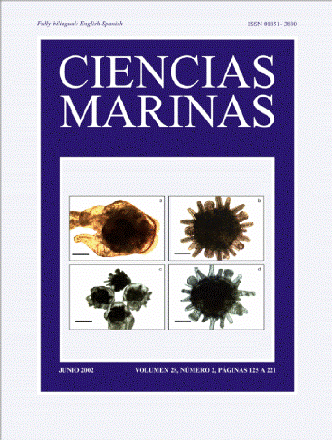Induction of metamorphosis with KCl in three species of sea urchins and its implications in the production of juveniles
Main Article Content
Abstract
A common practice for inducing metamorphosis in larvae of marine invertebrates is the use of a wide variety of artificial inducers. Excess K+ and Cs+ in seawater have proved to be very effective for this purpose, but not universally effective to induce metamorphosis in different phyla of marine invertebrates. In the present study we tested the response of three species of sea urchins to excess K+ in seawater as an artificial inducer. Excess K+ in seawater was presented to the larvae as continuous (24 h) or pulse exposure in concentrations ranging from 0.01 to 100 mM. Results showed that excess K+ in the form of KCl added to seawater was an effective metamorphic inducer of the three species of sea urchins tested; the purple sea urchin Strongylocentrotus purpuratus, the red sea urchin S. franciscanus and the white sea urchin Lytechinus pictus. The response was dependent on concentration and time of exposure. Continuous exposure (24 h or more) to excess K+ (100 mM) resulted lethal to the larvae of the three species. Excess K+ (100 mM) for 15 min resulted the most effective pulse-period to induce metamorphosis in the three species. This method of induction allows us to produce synchronous metamorphosed postlarvae useful for aquaculture and studies of signal transduction mechanisms during metamorphosis of sea urchins.
Downloads
Article Details
This is an open access article distributed under a Creative Commons Attribution 4.0 License, which allows you to share and adapt the work, as long as you give appropriate credit to the original author(s) and the source, provide a link to the Creative Commons license, and indicate if changes were made. Figures, tables and other elements in the article are included in the article’s CC BY 4.0 license, unless otherwise indicated. The journal title is protected by copyrights and not subject to this license. Full license deed can be viewed here.

